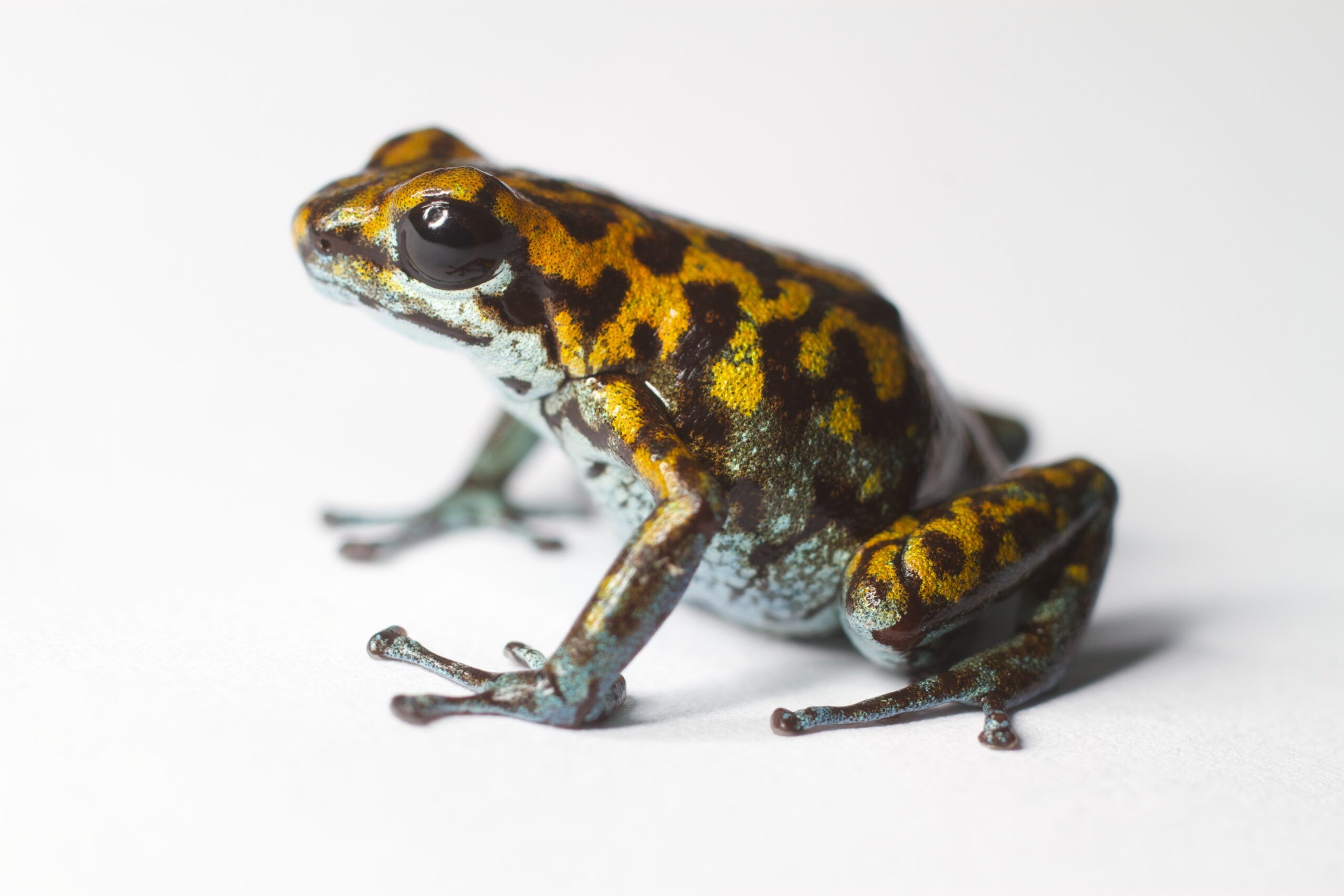Vicente’s poison frogs in Panama

Studies on this species are scarce, however, recent observations in the wild have provided us with new insights
A little frog facing big threats

Vicente’s poison frogs are endangered, and their population trend is decreasing according to the IUCN Red List. Little is known about these frogs in the wild because they’re tiny and live up in the trees. It appears that they inhabit virgin forests (areas that haven’t been touched by humans) on the Caribbean slope of the provinces of Coclé, Veraguas and Colón, although their exact distribution is unknown.
On average, males measure a tiny 20.3 mm and females 19.4 mm, and they’re patterned with colours that vary from green, blue, yellow, or red with or without black spots or reticulate patterns (a net-like formation).
Pictured: Tiny adult male Vicente’s poison frog
Assessing the distribution and effect of environmental variables
Studies on this species are scarce and so most of the information comes from frogs in captivity. However, recent observations in the wild have provided us with new insights into their behaviour including their activity patterns, diet, and bioacoustics – the sounds they produce and how they communicate. We now know that the frog’s song activity appears to be affected by the time of day and air temperature.
Our conservation partners in Panama, led by Eric Flores, are studying these frogs in the Santa Fe National Park. They’re looking at what temperature, humidity, rainfall, and forest structure the frogs prefer, during two seasons. Vital information on the importance of the environment where the frogs live will be analysed. Using a transcutaneous amphibian stimulator – a small device that delivers mild electrical pulses to the frog skin, causing it to release its alkaloids – toxins to ward off predators – unharmed – the frog’s skin’s poison secretions will be studied for the first time.
During the project, the research activities carried out by Eric, his field assistants and the local scientists will be filmed. Aerial views of the study sites will be captured using a drone and the footage will be used to produce a short video that the team will use to engage local communities and decision makers. We’ll share the video when it’s finished.
We want to give the Vicente’s poison frog a brighter future; with your help we can make a difference.
Header image credit Brian Gratwicke


